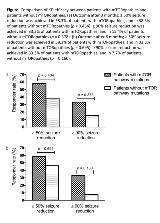The Efficacy of Ketogenic Diet According to the Presence of mTOR Pathway Mutations
Abstract number :
1.446
Submission category :
10. Dietary Therapies (Ketogenic, Atkins, etc.)
Year :
2019
Submission ID :
2421439
Source :
www.aesnet.org
Presentation date :
12/7/2019 6:00:00 PM
Published date :
Nov 25, 2019, 12:14 PM
Authors :
Ara Ko, Pusan National University Children's Hos; Sang Ook Nam, Pusan National University Children's Hos; Joon Soo Lee, Severance Children's Hospital; Heung Dong Kim, Severance Children's Hospital; Hoon-Chul Kang, Severance Children's Hospital
Rationale: The ketogenic diet (KD), a high fat, adequate protein, and low carbohydrate diet, is an established and effective therapy for drug-resistant epilepsy. One of numerous hypotheses suggested on mechanism of KD is via inhibition of mammalian target of rapamycin (mTOR) pathway by KD. With the assumption that KD demonstrates antiepileptic effect through mTOR pathway inhibition, this study aimed to assess the efficacy of KD in patients with pathologically confirmed focal cortical dysplasia (FCD) due to genetically identified mTOR pathway dysregulation. Methods: We retrospectively evaluated the data from patients with pathologically confirmed FCD after epilepsy surgery at Severance Children’s Hospital. Inclusion criteria were as follows: (1) patients who received epilepsy surgery at Severance Children’s Hospital since 2004, (2) patients whose pathology confirmed FCD on brain tissue; (3) patients whose brain tissues were assessed with deep sequencing for detection of low-level somatic mutations of mTOR pathway genes; and (4) patients who received KD therapy for more than 3 months, or who discontinued KD therapy before 3 months by epileptologists’ decision due to inefficacy. Patients who terminated KD therapy before 3 months due to reasons other than inefficacy such as poor compliance, adverse events, or proceeding to surgery were excluded. Results: Of 25 patients, 12 patients (48.0%) had identified germline (1 patient, DEPDC5) or somatic (12 patients) mTOR pathway mutations (8 MTOR, 2 TSC1, 1 TSC2, and 1 DEPDC5). Among clinical characteristics including age at seizure onset, age at KD initiation, gender, baseline seizure frequency, number of AEDs tried, syndromic diagnosis, classification of FCD, lead time of KD, KD duration, or KD ratio, none of these showed significant difference between patients with mTOR pathway mutations and patients without mTOR pathway mutations.
After 3 months of KD, a total of 12 (48.0%) patients showed response to KD (≥ 50% seizure reduction from baseline). When divided according to the presence of mTOR pathway mutations, 7 (58.3%) patients with mTOR pathway mutations were responders while 5 (38.5%) patients were responders to KD (Figure 1a). However, the difference was not statistically significant (p = 0.434). Also, 4 (33.3%) patients with mTOR pathway mutations showed ≥ 90% seizure reduction from the baseline, while 2 (15.4%) patients without mTOR pathway mutations showed ≥ 90% seizure reduction. This difference was also not significant (p = 0.378). Conclusions: The patients with mTORopathies did not show significant superior response to KD than those without mTORopathies, even though there was a trend toward the better response to KD. Funding: No funding

